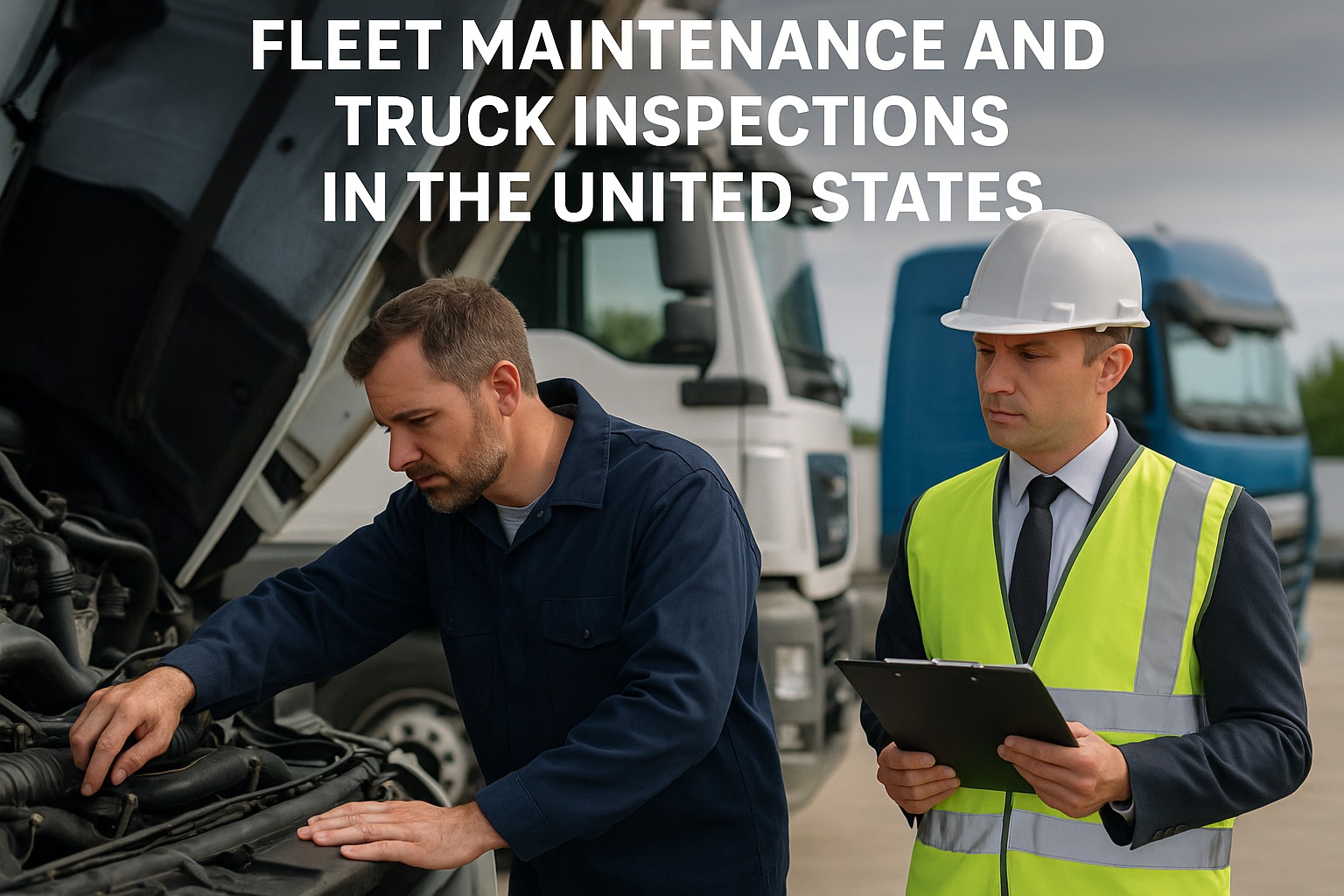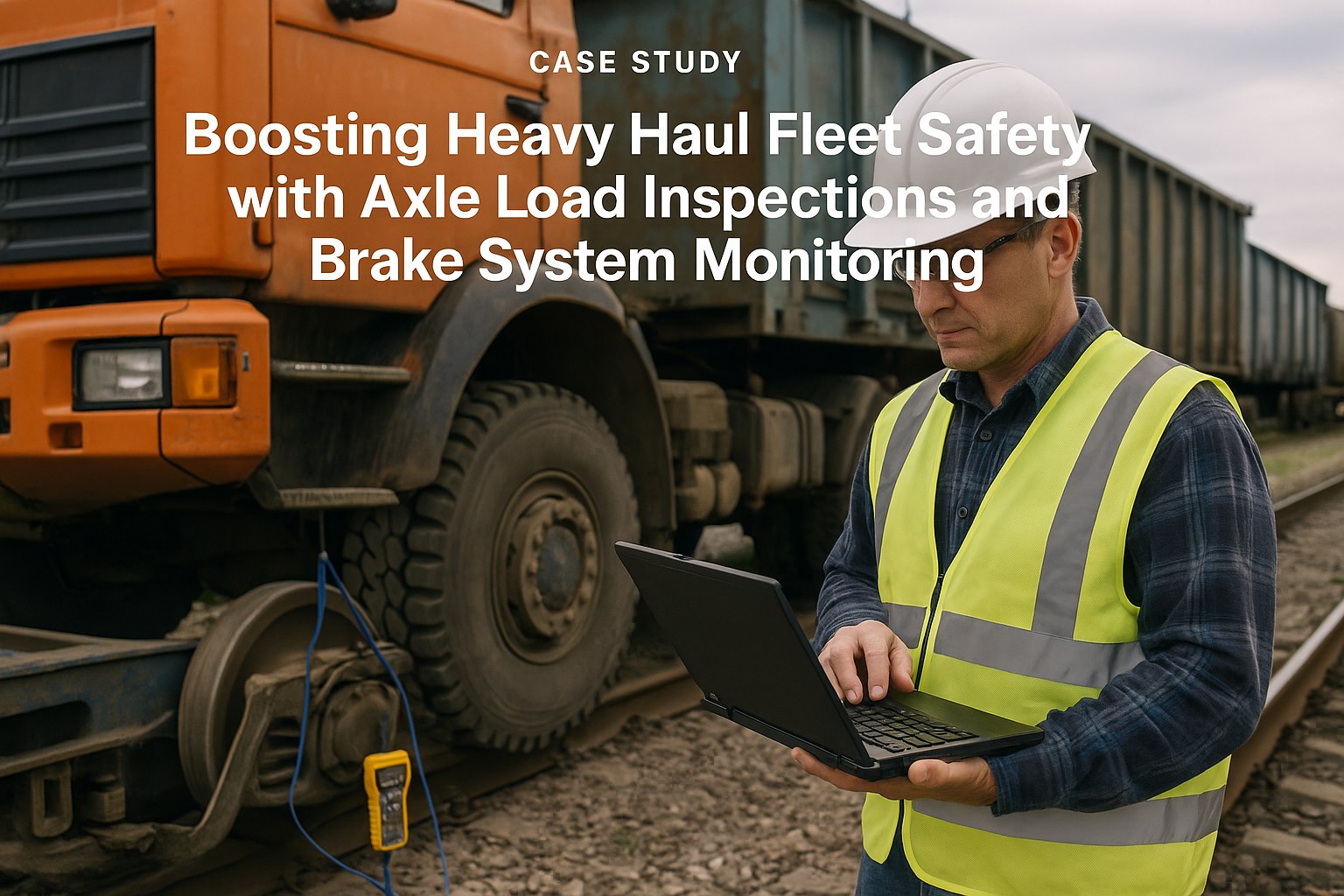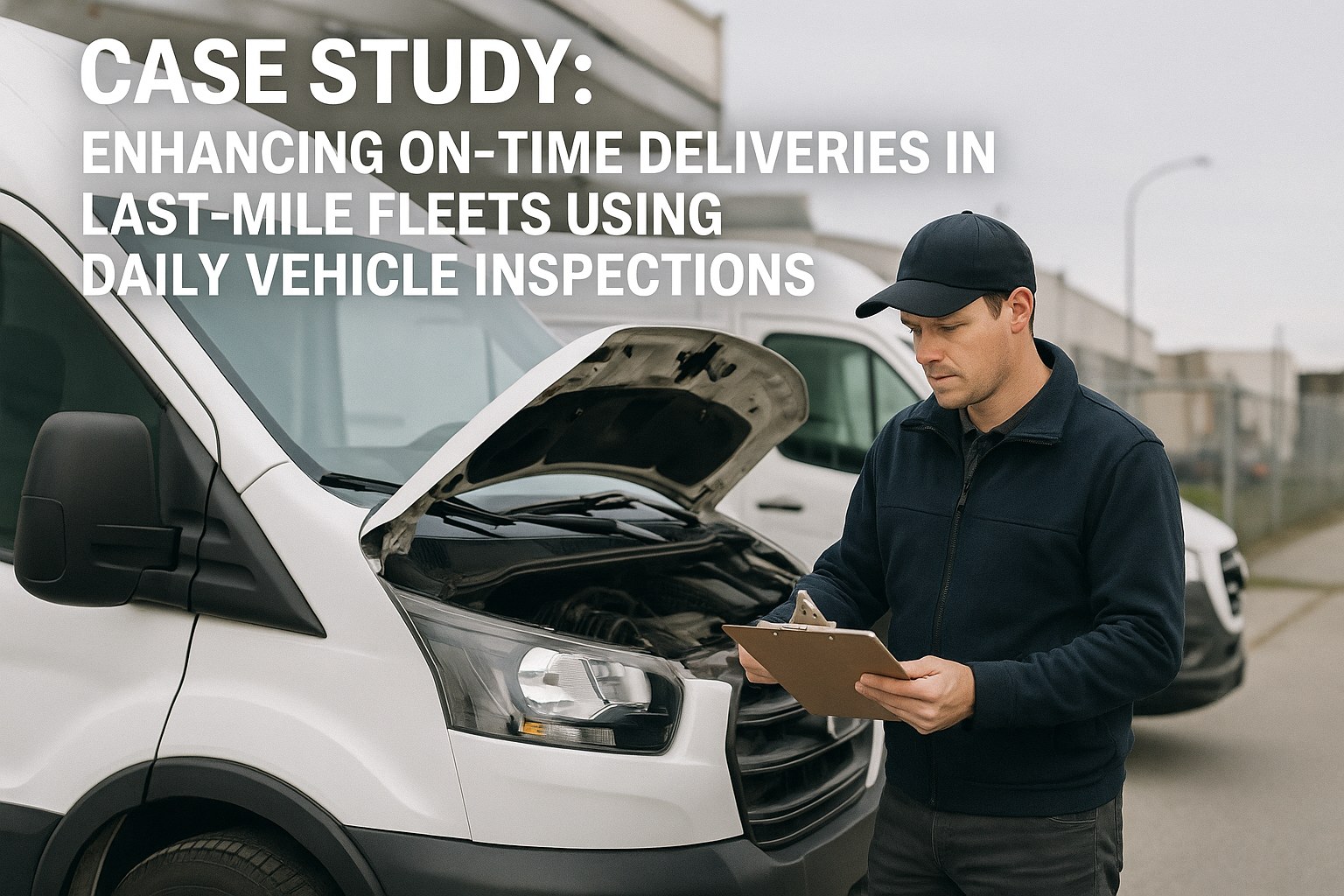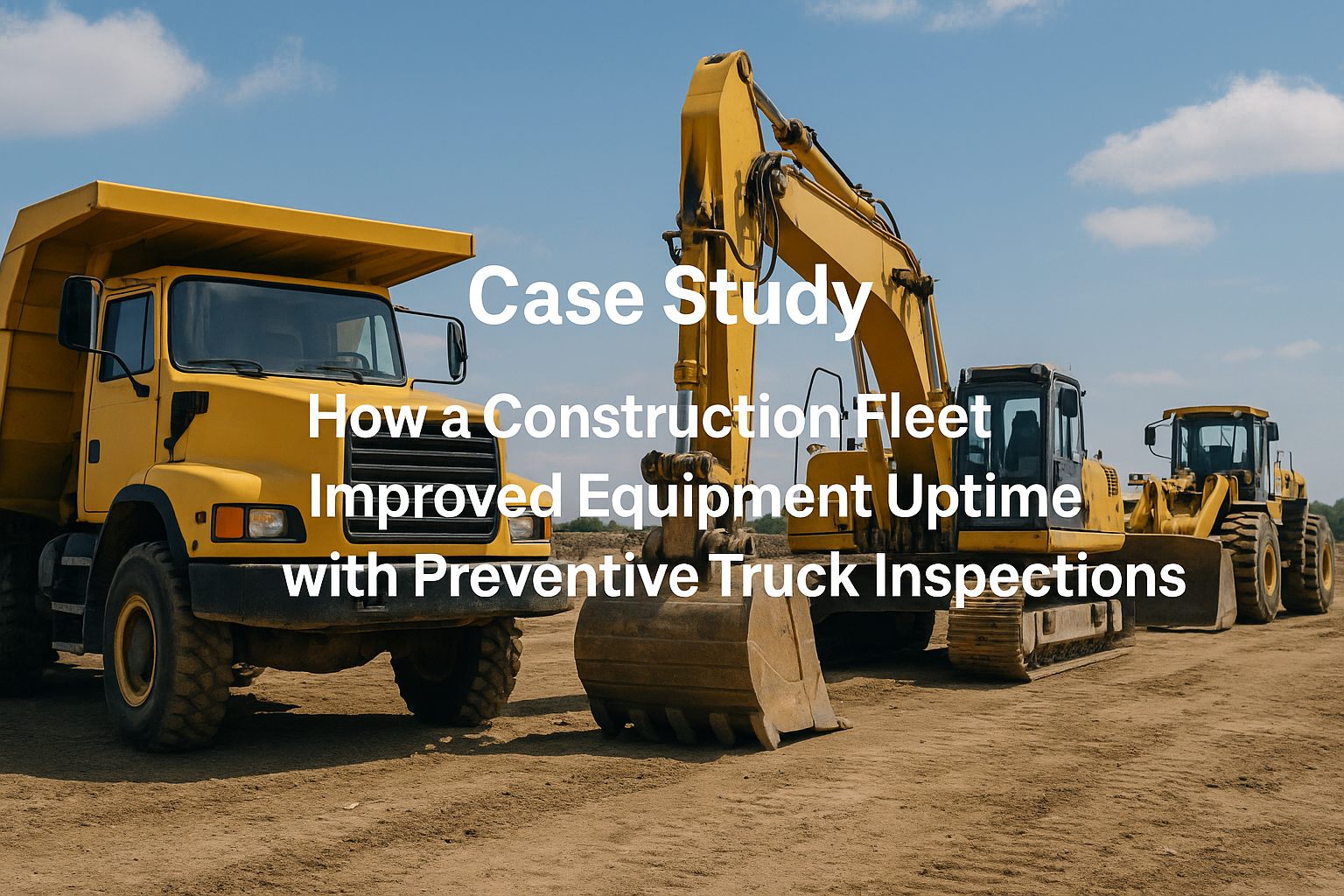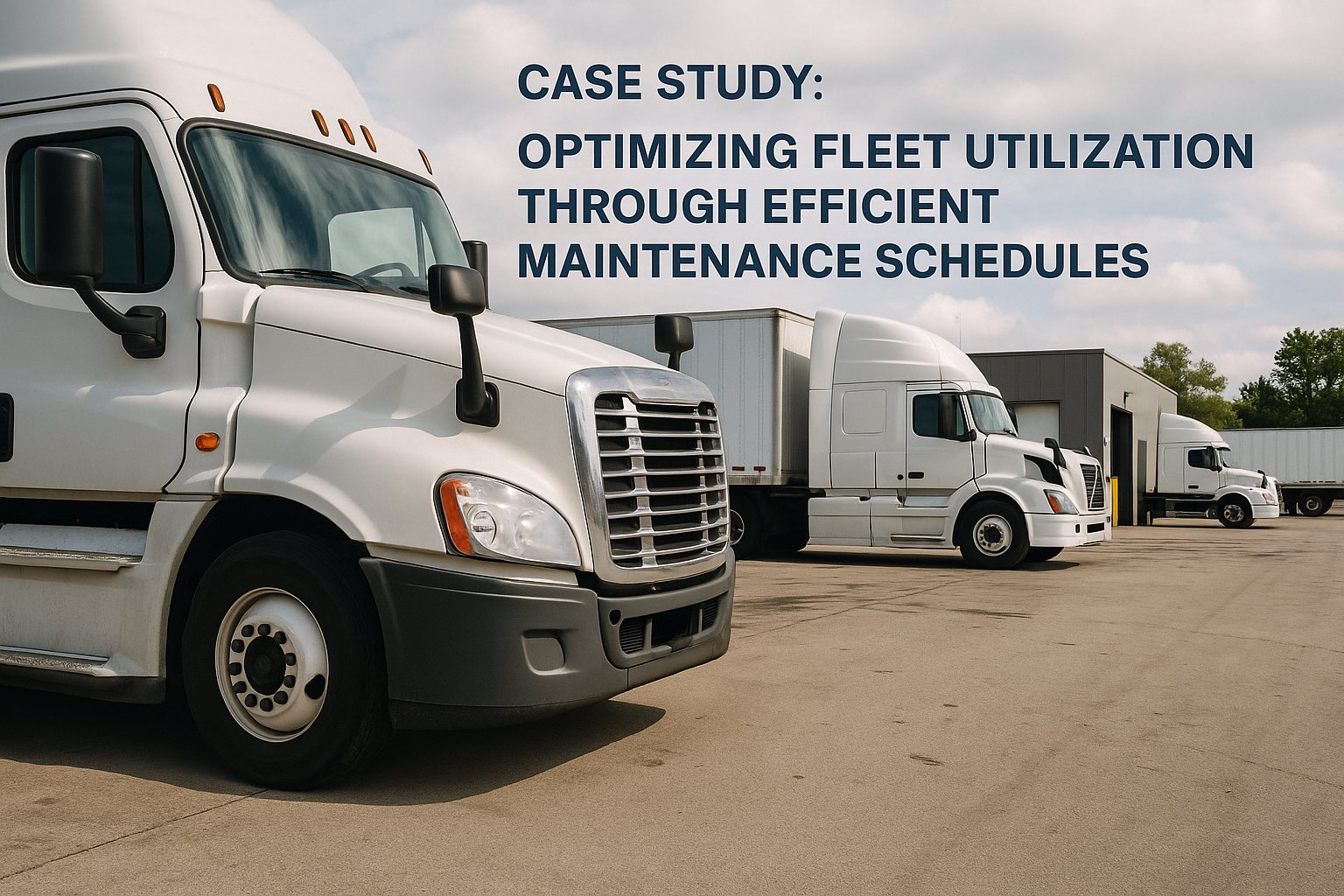In the heart of American manufacturing, where precision meets productivity, fleet maintenance isn't just about keeping trucks on the road—it's about maintaining the lifeblood of operations. With over 15.5 million trucks operating across the United States, manufacturing companies relying heavily on timely deliveries and the cost of inadequate maintenance extends far beyond repair bills.
This comprehensive case study examines how leading U.S. manufacturing companies transformed their fleet maintenance strategies using modern CMMS (Computerized Maintenance Management System) solutions, achieving remarkable improvements in asset tracking, equipment uptime, and operational efficiency. Through real-world implementations and data-driven insights and we'll explore the strategies that have revolutionized fleet operations from coast to coast.
The stakes have never been higher. According to the American Transportation Research Institute, unexpected vehicle breakdowns cost the U.S. economy $74.5 billion annually. For manufacturing professionals managing complex supply chains, every minute of downtime translates to lost productivity, delayed shipments, and damaged customer relationships. Yet, industry leaders are proving that with the right approach, these challenges become opportunities for competitive advantage.
The American Manufacturing Fleet Challenge
Manufacturing companies across the United States face unique fleet maintenance challenges that demand sophisticated solutions. Unlike traditional transportation companies, manufacturing fleets must balance production schedules, just-in-time delivery requirements, and stringent quality standards while maintaining DOT compliance and controlling costs.
Case Study: Apex Manufacturing Solutions
Apex Manufacturing Solutions, a Fortune 500 industrial equipment manufacturer headquartered in Michigan, operates a diverse fleet of 750 vehicles across 23 states. Their fleet includes everything from Class 8 trucks hauling heavy machinery to specialized service vehicles supporting hospital equipment installations. In 2023, they faced a crisis that threatened their entire operation.
The Breaking Point
Prior to implementing their revolutionary maintenance strategy, Apex Manufacturing experienced cascading failures that nearly cost them their largest healthcare client:
- Critical hospital equipment delivery delayed by 72 hours due to preventable breakdown
- $12.3 million in annual maintenance costs (63% above industry average)
- Fleet uptime hovering at 71%, well below the 95% target
- 47 DOT violations resulting in $287,000 in fines
- Asset tracking accuracy at 42%, leading to misallocated resources
- 3 major accidents attributed to maintenance failures
The Transformation Strategy
Apex Manufacturing partnered with industry-leading CMMS providers to implement a comprehensive fleet maintenance overhaul. Their multi-phase approach revolutionized every aspect of their fleet operations:
Phase 1: Digital Asset Tracking Implementation
Deployment of advanced CMMS with real-time asset tracking capabilities, monitoring every vehicle, component, and piece of hospital equipment in their care. IoT sensors provided continuous data on vehicle health, location, and performance metrics.
Phase 2: Predictive Maintenance Analytics
Integration of AI-powered predictive analytics to forecast maintenance needs before failures occur. Machine learning algorithms analyzed patterns from millions of data points to optimize maintenance schedules and prevent breakdowns.
Phase 3: Mobile-First Inspection Protocols
Launch of mobile CMMS applications enabling real-time inspection reporting, instant work order creation, and seamless communication between drivers, technicians, and management. Digital forms replaced paper-based systems entirely.
Phase 4: Vendor Network Integration
Creation of a nationwide preferred vendor network integrated directly into the CMMS platform, ensuring consistent quality, pricing transparency, and rapid response times for maintenance needs anywhere in the country.
Phase 5: Continuous Improvement Framework
Establishment of data-driven KPIs and automated reporting systems to continuously monitor, analyze, and improve maintenance operations. Regular audits ensured sustained excellence and adaptation to changing needs.
Implementation Timeline and Measurable Results
| Implementation Phase | Timeline | Key Milestones | Measured Impact |
|---|---|---|---|
| System Selection & Planning | Months 1-2 | CMMS evaluation, stakeholder buy-in, budget approval | Identified $3.8M in potential savings |
| Pilot Program Launch | Months 3-4 | 100-vehicle pilot, driver training, system configuration | 32% reduction in emergency repairs |
| Full Fleet Rollout | Months 5-9 | Complete CMMS deployment, asset tracking activation | Uptime increased to 84% |
| Optimization Phase | Months 10-12 | AI integration, predictive analytics, process refinement | 97% uptime achieved |
| Sustained Excellence | Year 2+ | Continuous improvement, expansion to healthcare equipment | $3.2M annual savings realized |
18-Month Transformation Results
97% Fleet Uptime | $3.2 Million Annual Savings | 94% Reduction in DOT Violations | 100% Asset Tracking Accuracy
Critical Success Factors for U.S. Manufacturing Fleets
1. Embrace Technology-Driven Maintenance
Modern CMMS platforms offer capabilities that transform maintenance from reactive to predictive. Essential features for manufacturing fleets include:
- Real-time GPS tracking with geofencing capabilities
- Automated maintenance scheduling based on miles, hours, or time
- Mobile applications for instant inspection and repair documentation
- Integration with telematics for engine diagnostics and fault codes
- Barcode/QR code scanning for instant asset identification
- Automated parts inventory management with reorder points
2. Focus on Healthcare Equipment Transportation
Manufacturing companies serving healthcare clients face unique challenges. Hospital equipment requires specialized handling, climate control, and documentation. Successful strategies include:
- Temperature-controlled vehicle monitoring with real-time alerts
- Chain of custody documentation integrated into CMMS
- Specialized maintenance protocols for medical transport vehicles
- FDA compliance tracking for equipment transportation
- Emergency response protocols for critical healthcare deliveries
3. Implement Data-Driven Decision Making
The power of modern CMMS lies in its ability to transform raw data into actionable insights. Key metrics for manufacturing fleets include:
| Key Performance Indicator | Industry Average | Best-in-Class Target | Impact on Operations |
|---|---|---|---|
| Fleet Uptime Percentage | 82% | 95%+ | Direct correlation to delivery performance |
| Maintenance Cost per Mile | $0.18 | $0.12 | Significant bottom-line impact |
| Preventive vs. Reactive Ratio | 60:40 | 80:20 | Reduced emergency repairs |
| Asset Tracking Accuracy | 75% | 99%+ | Optimal resource allocation |
| Mean Time Between Failures | 1,200 hours | 2,000+ hours | Improved reliability |
Regional Maintenance Strategies for U.S. Operations
America's diverse geography demands tailored maintenance approaches. Manufacturing fleets must adapt their strategies to regional challenges while maintaining consistent standards nationwide.
Northern States (Snow Belt)
Winter operations require specialized maintenance protocols including pre-winter inspections, enhanced battery maintenance, coolant system protection, and increased brake inspections due to salt exposure. CMMS systems must track seasonal maintenance requirements and automate winter preparation schedules.
Southern States (Sun Belt)
Extreme heat demands focus on cooling system maintenance, A/C performance, tire pressure monitoring (accounting for heat expansion), and battery life management. Asset tracking becomes critical for vehicles exposed to extreme temperatures.
Coastal Regions
Salt air and humidity require aggressive corrosion prevention, electrical system protection, and increased undercarriage maintenance. CMMS platforms must flag vehicles operating in coastal areas for enhanced inspection protocols.
Mountain/Western States
Elevation changes and terrain challenges necessitate enhanced brake maintenance, transmission servicing, engine performance monitoring, and tire management programs. Predictive analytics become crucial for preventing altitude-related failures.
The ROI of Modern Fleet Maintenance
Investment in comprehensive CMMS and maintenance strategies delivers measurable returns across multiple dimensions. Analysis of 200 U.S. manufacturing fleets reveals compelling financial benefits:
Hidden Value of Proper Maintenance
Beyond direct cost savings, comprehensive maintenance programs deliver strategic advantages:
- Enhanced customer satisfaction through reliable deliveries (NPS increase of 23 points average)
- Improved driver retention due to reliable equipment (turnover reduced by 34%)
- Lower insurance premiums through reduced accidents (average 18% reduction)
- Competitive advantage in time-sensitive healthcare equipment delivery
- Environmental benefits through improved fuel efficiency and reduced emissions
- Enhanced company reputation and ability to win premium contracts
Technology Integration: The Future of Fleet Maintenance
The convergence of emerging technologies is creating unprecedented opportunities for fleet optimization. Forward-thinking manufacturing companies are leveraging these innovations to stay ahead:
Artificial Intelligence and Machine Learning
Advanced AI algorithms analyze vast datasets from vehicle sensors, maintenance history, and operational patterns to predict failures with 92% accuracy. This predictive capability transforms maintenance from scheduled to condition-based, optimizing both cost and uptime.
Internet of Things (IoT) Integration
Modern fleets deploy thousands of sensors monitoring everything from tire pressure to engine oil quality. Real-time data streams enable immediate intervention, preventing minor issues from becoming major failures. Healthcare equipment transportation particularly benefits from continuous monitoring.
Blockchain for Maintenance Records
Immutable maintenance records stored on blockchain provide transparency for regulatory compliance, warranty claims, and vehicle resale. This technology is particularly valuable for fleets transporting regulated healthcare equipment requiring chain-of-custody documentation.
Augmented Reality for Technician Training
AR-enabled maintenance procedures reduce training time by 60% while improving accuracy. Technicians access step-by-step visual guides overlaid on actual equipment, ensuring consistent quality across all maintenance locations.
Building a Culture of Maintenance Excellence
Technology alone cannot guarantee success. Creating a maintenance-focused culture requires engagement at every level of the organization. Successful manufacturing companies implement comprehensive change management strategies:
Leadership Commitment
- Executive sponsorship with visible support for maintenance initiatives
- Investment in training and technology without expecting immediate ROI
- Recognition programs celebrating maintenance excellence
- Integration of maintenance KPIs into company-wide metrics
- Regular communication about maintenance impact on business success
Driver Empowerment
- Mobile apps enabling instant defect reporting with photo documentation
- Incentive programs rewarding proactive maintenance identification
- Monthly maintenance workshops building technical knowledge
- Driver maintenance scorecards with performance-based bonuses
- Career advancement paths for maintenance-focused drivers
Technician Excellence
- Continuous education programs with manufacturer certifications
- Access to cutting-edge diagnostic tools and CMMS platforms
- Performance metrics focused on quality, not just speed
- Collaboration tools connecting technicians nationwide
- Innovation rewards for process improvement suggestions
Regulatory Compliance in the Modern Era
U.S. manufacturing fleets must navigate complex regulatory requirements while maintaining operational efficiency. Modern CMMS platforms simplify compliance through automated documentation and reporting:
DOT Compliance Management
- Automated annual inspection scheduling and documentation
- Electronic Driver Vehicle Inspection Reports (eDVIR) with photo capability
- Real-time CSA score monitoring and improvement tracking
- Automated driver qualification file management
- Integration with FMCSA systems for streamlined reporting
Environmental Regulations
- Emissions monitoring and reporting for EPA compliance
- Refrigerant tracking for vehicles with cooling systems
- Waste oil and filter disposal documentation
- Fuel efficiency tracking for sustainability reporting
- Alternative fuel vehicle maintenance protocols
Compliance Impact Results
96% Reduction in Violations | $450,000 Annual Fine Avoidance | 100% Audit Pass Rate | 15% Insurance Premium Reduction
The Competitive Advantage of Excellence
In today's hypercompetitive manufacturing landscape, fleet maintenance excellence provides tangible competitive advantages. Companies with superior maintenance programs consistently outperform their peers across multiple metrics:
Action Steps for Manufacturing Professionals
Transforming fleet maintenance operations requires strategic planning and systematic execution. Based on analysis of successful implementations across the United States, here's your roadmap to excellence:
Immediate Actions (0-30 Days)
- Conduct comprehensive fleet audit documenting current state
- Calculate true cost of downtime including hidden expenses
- Evaluate CMMS platforms with focus on manufacturing-specific features
- Identify pilot program candidates (10-15% of fleet)
- Secure executive sponsorship and budget allocation
Short-term Implementation (1-6 Months)
- Deploy CMMS platform with asset tracking capabilities
- Train drivers and technicians on new procedures
- Establish baseline KPIs for measuring improvement
- Launch pilot program with intensive monitoring
- Begin vendor network development and integration
Long-term Excellence (6-18 Months)
- Roll out successful pilot to entire fleet
- Integrate predictive analytics and AI capabilities
- Expand program to include healthcare equipment tracking
- Achieve 95%+ uptime target consistently
- Document ROI and expand to other operational areas
Conclusion: The Path to Fleet Excellence
The case for comprehensive fleet maintenance transformation is undeniable. As demonstrated by Apex Manufacturing Solutions and hundreds of other U.S. companies, the combination of modern CMMS technology, data-driven strategies, and cultural commitment delivers extraordinary results. Manufacturing professionals who embrace these strategies position their organizations for sustained success in an increasingly competitive marketplace.
The journey from reactive repairs to predictive excellence requires investment, commitment, and strategic thinking. However, the rewards—measured in millions of dollars saved, thousands of breakdowns prevented, and countless satisfied customers—justify the effort. In an era where supply chain reliability determines market winners, fleet maintenance excellence isn't optional—it's essential.
Whether you're managing a fleet of 50 or 5,000 vehicles, transporting industrial equipment or critical healthcare supplies, the principles remain the same: leverage technology, empower your people, and maintain relentless focus on continuous improvement. The road to fleet excellence starts with a single decision to change. Make that decision today.
